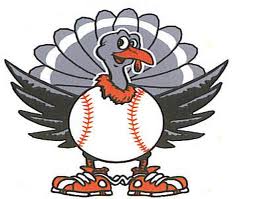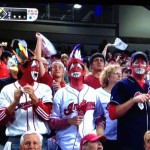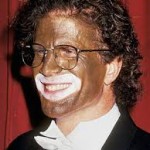How much live action actually occurs in each major sport?
Note: if you’ve found this and want to make a comment about how football is such a more exiting sport than soccer, or think this is some sort of anti-football post … then you’re missing the point. This is about LIVE ACTION stats and the viewing experience. If you love Cricket, you’ll sit there for 5 hour test matches where there’s fractions of periods of real action. If you love football, then you’ll sit there for hours on end. That’s not the point here.
Editor Post-publishing Update: this was originally published in July of 2013. Over the years I have updated this post with additional information, resulting in adjusted numbers from the original. I’m always looking for more and better information and am all ears if you have links to these kinds of studies.
I’ve never been the biggest NFL fan, despite living in a distinctly football town here in Washington DC. But in the past few years or so, slowly my patience for watching an entire NFL football broadcast has ended. Notice how games used to be slated for 1pm and 4pm on Sundays? Now they’re 1pm and 4:15pm, or maybe even 4:25pm, with seemingly all that extra time now devoted to commercials. Every time there’s a time-out, a break in play, after every challenge, there’s more commercials. My friends and I have a joke. I’ll ask “Hey, what time is the 8:00 game?” And instead of the answer being obvious … the answer is 8:15 or 8:30 or whenever they’ve now pushed the late Sunday night game thanks to the 4:00 games running late (you know, since they now start at 4:15 or 4:25 or whenever they’re slated to start).
Ironically, the same distinct lack of action complaint is easily seen in baseball broadcasts. So I can’t be casting too many hypocritical stones against my football-following brethren (this is a Baseball-focused blog after all).
I got to wondering; just how many frigging commercials do they really show in NFL games these days? This pursuit led to the larger issue: How often is the ball actually in play in an NFL game? How often are the fans just sitting there watching crowd shots or replays or pictures of cheerleaders or head coaches looking constipated?
So I started looking far and wide for “Ball in Play” studies for the 5 major professional sports to compare and contrast the TV viewer experience. Here’s what I’ve found (all sources are listed at the bottom and referenced inline). For some sports (Hockey and Basketball) it is relatively easy to assume that, if the clock is running, there’s action. For the others, with either a lack of a clock (Baseball) or significant periods of inactivity while the clock is running (Soccer to some extent but especially in Football) the details are harder to come by.
- Baseball: Per the 2013 WSJ study, Baseball games feature 17 minutes and 58 seconds of action. Baseball games have been increasing in length (thanks in part to the eighteen annual 4-hour marathons between the glacial Boston Red Sox and equally glacial New York Yankees) over the years. But, the amount of action has stayed roughly the same. A 1952 TV broadcast showed about 13 minutes of action but just 9 minutes 45 seconds of commercials. The latest WSJ study found that fully 42 minutes and 41 seconds of between-inning inactivity would be purely commercial time on TV broadcasts. That means there’s nearly 5 times as many commercials now than 50 years ago. 2015: thanks to new pace of play rules, the average length of a baseball game dropped by 6 minutes from 2014. 2017 update: ESPN published a study of the 2017 playoffs, which have been dragging. The average MLB playoff game in 2017 has been going 3hrs, 35mins, which is up 10 minutes from 2016 and an astonishing 21 minutes from 2015. I get that playoffs are more strategic, that pitchers are on quick hooks b/c there’s a finite amount of time, but this 3hrs 35mins is brutal.
- Football: Per the WSJ 2010 study, NFL games feature about 11 minutes of action. The amount of action in football games has been roughly the same since the early 1900s. There was roughly 13 1/2 minutes of action in 1912, and slightly less in the 2010 study. Other studies have shown that football generally ranges between 12-17 minutes of action. Personally I tracked one quarter of an NFL playoff game a few years ago with these numbers: in 50 minutes of clock time we saw exactly 250 seconds of action (4 minutes, 10 seconds) accompanied by no less than 20 commercials. And this turned out to be a relatively “easy” quarter: one time out, one two-minute warning and two challenges/reviews. It could have been a lot worse. More recent studies have found that things are worsening for the NFL: WP’s Fred Bowen counted the ads in a 2014 NFL game and had seen an astounding 152 advertisements during the game. 152; that was more ads than plays from scrimmage. Update for 2015: the early returns on the first few weeks of the season show a huge up-tick in penalties, which have slowed the game by four minutes from 2014 and average times are now at 3hrs 10minutes for games. 2017 update: the NFL has made some tweaks and the average game length through 2 weeks is down significantly, to 3hrs 4mins from 3hrs 15minutes in 2016.
- Basketball: NBA games average 2 hours and 18 minutes in actual time. Working backwards (since the clock only runs when the ball is in play and we know there’s exactly 48 minutes of play time) we know that there’s 138-48 = 90 minutes of “down time” of some sort in a typical NBA game. Not all of that is commercial time but all of it is inaction. I cannot find any documentation of typical number of commercials so i’ve just split the difference between on-screen inaction and off-screen commercials in the table below. If you’re a big-time NBA watcher and feel this isn’t fair, please comment as such.
- Hockey: The Livestrong piece below (side note: why is Livestrong doing “ball-in-play” studies on Hockey?) quotes average NHL games being 2hours and 19minutes in the 2003-4 season. Working backwards from this, you have three 20-minute periods and two 17 minute intermissions, which leaves 46 minutes of remaining idle time. Given that the idle times in Hockey are not nearly as long as those in basketball, I’m going to estimate that about 2/3rds of that 46minutes is commercials.
- Soccer: Per the Soccerbythenumbers.com website 2011 study, between 62 and 65 minutes of ball-in-play action is seen on average in the major European pro leagues per game. For the table below i’ll use 64 minutes as an average. The duration of pro soccer games is relatively easy to calculate: they fit neatly into a 2 hour window by virtue of its 45minute halves, 15 minute break and an average of 3 minutes added-time on either side of the halves. 45+45+3+3+15 = 111 minutes of a 2 hour/120 minute time period. Thanks to a bit of fluff on either side of the game, you generally count a soccer broadcast to last 1 hour and 55 minutes. In the table below i’ve assumed that a huge portion of the intermission is commercial; in fact it is a lot less since most soccer broadcasts have a half-time show and highlights. So if anything, the # of commercials in soccer broadcasts is less than listed. Post 2014 World Cup Update: FIFA estimates that the group stage games averaged 57.6 minutes of action per game (if i’m reading their stat page correctly). I’ll use this as the number going forward, even though World Cup games might be a bit “slower” than your average pro soccer game due to the careful, tactical nature of most of the matches.
So, in summary, here’s how the five major sports look like in terms of Ball in Play and # of commercials the viewer is forced to endure in a typical broadcast:
| Sport |
Clock Duration |
Amt of Action |
% of Action |
Amt of Commercial Time |
Est # of 30-second commercials |
# of commercials/hour |
| Baseball |
2hrs 56mins |
17mins, 58secs |
10.21% |
42.68 |
85 |
29 |
| Football |
3hrs 10mins |
11mins |
5.79% |
75 |
150 |
47 |
| Soccer |
1hr 55mins |
57.6mins |
50.09% |
19 |
38 |
20 |
| Basketball |
2hrs 18mins |
48mins |
34.78% |
45 |
90 |
39 |
| Hockey |
2hrs 20mins |
60mins |
42.86% |
30 |
60 |
26 |
From this you can clearly see that watching Soccer gives you the most amount of live “Action,” though cynics and soccer-haters would probably claim that a lot of that action is “dead action,” defenders passing the ball around and not the type of action you see in other sports. I’m a soccer fan and would rather have this type of “dead action” than what we see in the NFL: one 3 second running play then more than 30 seconds of watching players stand around before running another 3 second running play. Don’t be fooled; there’s plenty of dead action in other sports too that gets counted as “live action” here … players walking the ball up the court in slow motion for 10 seconds in Basketball, the dumping of the puck to the end of the ice to facilitate a line shift in Hockey, etc. So this kind of analysis is not an exact science.
Soccer is easily the most predictable of the five sports to plan a viewing experience around; you know for a fact that a regular-season/non-Overtime game is going to be over within 2 hours. All the other sports can go into over-time and lengthen the time commitment.
Professional Football is at the bottom of all of these Viewer-experience measures: it is the longest broadcast, shows the least amount of game action and forces around 50 commercials an hour onto its viewers. And the NFL is only getting worse; recent years have seen the introduction of new commercial breaks where none existed before (after a kickoff being the most ridiculous, but the mandated booth reviews at the end of halves now gift-wrap new commercial breaks to broadcasters at a game’s most critical time).
Thoughts? If you have better information I’m all ears. I’ve had very good suggestions to add to this data stuff like College Football, College Basketball and Tennis. Perhaps some day with more research we’ll revisit.
Sources:


